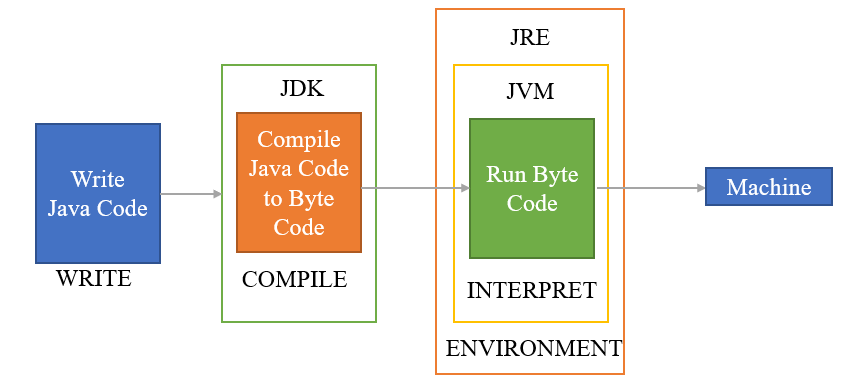Core Java refers to the fundamental aspects of the
Java programming language. It includes the basic
concepts and features that form the foundation for all
Java-based programming and development. Core Java is
essential for understanding more advanced Java
technologies and frameworks.
Contribution and Industrial Dependency of Java
Java is a widely used programming language known for
its versatility, reliability, and scalability. Many
key applications and platforms across various
domains are developed in Java. Here are some notable
examples:
-
Enterprise and Business Applications:
-
Apache Hadoop: A framework
that allows for the distributed processing of
large data sets across clusters of computers.
-
Spring Framework: A
comprehensive programming and configuration
model for modern Java-based enterprise
applications.
-
Apache Tomcat: An open-source
implementation of the Java Servlet, JavaServer
Pages, and Java Expression Language
technologies.
-
IBM WebSphere: A set of
Java-based tools from IBM that allows users to
create and manage sophisticated business
websites.
-
Financial Services:
-
Murex: A trading, risk
management, and processing platform.
-
Goldman Sachs' SecDB: A risk
management and trading system.
-
Big Data Technologies:
-
Apache Kafka: A distributed
event streaming platform.
-
Apache Spark: An open-source
unified analytics engine for large-scale data
processing.
-
Web Applications:
-
LinkedIn: The backend of
LinkedIn is heavily based on Java.
-
eBay: Uses Java for various
backend services.
-
Content Management Systems (CMS):
-
Alfresco: An enterprise
content management system.
-
Liferay: A portal and
collaboration platform.
-
Android Development:
-
Android Apps: Many Android
applications are developed using Java, as
Android’s primary development language was
originally Java.
-
Scientific Applications:
-
MATLAB: Although primarily
written in C, Java is used in certain parts of
the application.
-
HDF5: Hierarchical Data
Format, a set of file formats designed to
store and organize large amounts of data.
-
Government and Public Sector:
-
NASA WorldWind: A software
development kit (SDK) that allows developers
to create interactive visualizations of 3D
globe and map data.
-
E-commerce:
-
Amazon: Uses Java for various
backend systems.
-
Walmart: Java is used in its
global online retail operations.
-
Middleware Products:
-
JBoss: An open-source
Java-based application server.
-
Integrated Development Environments (IDEs):
-
Eclipse: A popular Java-based
IDE.
-
IntelliJ IDEA: Another
widely used Java IDE.
-
Gaming:
-
Minecraft: Originally
developed in Java, it's one of the most
popular games globally.
Java’s platform independence, object-oriented
nature, and robust libraries make it a popular
choice for these diverse applications and platforms.



